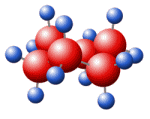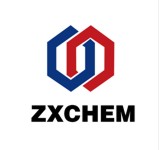|
|
|

|
Suppliers for
Tetraethyl lead
|
Properties | | CAS |
78-00-2 | | Formula |
C8H20Pb | | EINECS |
201-075-4 |

|
|
5 Registered suppliers
TETRAETHYLLEAD Chemical Properties
| | mp | − 136 °C(lit.)
| | bp | 84-85 °C15 mm Hg(lit.)
| | density | 1.653 g/mL at 25 °C(lit.)
| | refractive index | n20/D 1.519(lit.)
| | Fp | 84 °F
| | Stability | Stable. Highly flammable. Incompatible with strong oxidizing agents, concentrated acids. May dissolve some types of rubber. May be light sensitive. May detonate if confined at temperatures above 110 C.
| Safety Information
| | Hazard codes | T+,N
| | Risk statements | 61-26/27/28-33-50/53-62-38-10
| | safety statements | 53-45-60-61-36/37-26-28
| | RIDADR | UN 1649 6.1/PG 1
| | WGK Germany | 3
| | TSCA | with a characteristic odor. Flash point 200°F. Density 14 lb / gal. Insoluble in water. Toxic by inhalation and by skin absorption.
| | Air & Water Reactions | Insoluble in water.
| | Reactivity Profile | TETRAETHYL LEAD decomposes under UV light. Reacts with fats; reacts violently with oxidizing agents, causing fire and explosion hazards. Attacks rubber [Handling Chemicals Safely 1980. p. 890].
| | Health Hazard | Extremely poisonous; may be fatal if inhaled, swallowed, or absorbed from the skin. Contact may cause burns to skin and eyes. Most symptoms of poisoning are due to the effects of tetraethyllead on the nervous system.
| | Fire Hazard | May explode in fires. Decomposes slowly at room temperature and more rapidly at elevated temperatures. |
TETRAETHYLLEAD Chemical Properties
| | mp | − 136 °C(lit.)
| | bp | 84-85 °C15 mm Hg(lit.)
| | density | 1.653 g/mL at 25 °C(lit.)
| | refractive index | n20/D 1.519(lit.)
| | Fp | 84 °F
| | Stability | Stable. Highly flammable. Incompatible with strong oxidizing agents, concentrated acids. May dissolve some types of rubber. May be light sensitive. May detonate if confined at temperatures above 110 C.
| Safety Information
| | Hazard codes | T+,N
| | Risk statements | 61-26/27/28-33-50/53-62-38-10
| | safety statements | 53-45-60-61-36/37-26-28
| | RIDADR | UN 1649 6.1/PG 1
| | WGK Germany | 3
| | TSCA | with a characteristic odor. Flash point 200°F. Density 14 lb / gal. Insoluble in water. Toxic by inhalation and by skin absorption.
| | Air & Water Reactions | Insoluble in water.
| | Reactivity Profile | TETRAETHYL LEAD decomposes under UV light. Reacts with fats; reacts violently with oxidizing agents, causing fire and explosion hazards. Attacks rubber [Handling Chemicals Safely 1980. p. 890].
| | Health Hazard | Extremely poisonous; may be fatal if inhaled, swallowed, or absorbed from the skin. Contact may cause burns to skin and eyes. Most symptoms of poisoning are due to the effects of tetraethyllead on the nervous system.
| | Fire Hazard | May explode in fires. Decomposes slowly at room temperature and more rapidly at elevated temperatures. |
TETRAETHYLLEAD Chemical Properties
| | mp | − 136 °C(lit.)
| | bp | 84-85 °C15 mm Hg(lit.)
| | density | 1.653 g/mL at 25 °C(lit.)
| | refractive index | n20/D 1.519(lit.)
| | Fp | 84 °F
| | Stability | Stable. Highly flammable. Incompatible with strong oxidizing agents, concentrated acids. May dissolve some types of rubber. May be light sensitive. May detonate if confined at temperatures above 110 C.
| Safety Information
| | Hazard codes | T+,N
| | Risk statements | 61-26/27/28-33-50/53-62-38-10
| | safety statements | 53-45-60-61-36/37-26-28
| | RIDADR | UN 1649 6.1/PG 1
| | WGK Germany | 3
| | TSCA | with a characteristic odor. Flash point 200°F. Density 14 lb / gal. Insoluble in water. Toxic by inhalation and by skin absorption.
| | Air & Water Reactions | Insoluble in water.
| | Reactivity Profile | TETRAETHYL LEAD decomposes under UV light. Reacts with fats; reacts violently with oxidizing agents, causing fire and explosion hazards. Attacks rubber [Handling Chemicals Safely 1980. p. 890].
| | Health Hazard | Extremely poisonous; may be fatal if inhaled, swallowed, or absorbed from the skin. Contact may cause burns to skin and eyes. Most symptoms of poisoning are due to the effects of tetraethyllead on the nervous system.
| | Fire Hazard | May explode in fires. Decomposes slowly at room temperature and more rapidly at elevated temperatures. |
TETRAETHYLLEAD Chemical Properties
| | mp | − 136 °C(lit.)
| | bp | 84-85 °C15 mm Hg(lit.)
| | density | 1.653 g/mL at 25 °C(lit.)
| | refractive index | n20/D 1.519(lit.)
| | Fp | 84 °F
| | Stability | Stable. Highly flammable. Incompatible with strong oxidizing agents, concentrated acids. May dissolve some types of rubber. May be light sensitive. May detonate if confined at temperatures above 110 C.
| Safety Information
| | Hazard codes | T+,N
| | Risk statements | 61-26/27/28-33-50/53-62-38-10
| | safety statements | 53-45-60-61-36/37-26-28
| | RIDADR | UN 1649 6.1/PG 1
| | WGK Germany | 3
| | TSCA | with a characteristic odor. Flash point 200°F. Density 14 lb / gal. Insoluble in water. Toxic by inhalation and by skin absorption.
| | Air & Water Reactions | Insoluble in water.
| | Reactivity Profile | TETRAETHYL LEAD decomposes under UV light. Reacts with fats; reacts violently with oxidizing agents, causing fire and explosion hazards. Attacks rubber [Handling Chemicals Safely 1980. p. 890].
| | Health Hazard | Extremely poisonous; may be fatal if inhaled, swallowed, or absorbed from the skin. Contact may cause burns to skin and eyes. Most symptoms of poisoning are due to the effects of tetraethyllead on the nervous system.
| | Fire Hazard | May explode in fires. Decomposes slowly at room temperature and more rapidly at elevated temperatures. |
TETRAETHYLLEAD Chemical Properties
| | mp | − 136 °C(lit.)
| | bp | 84-85 °C15 mm Hg(lit.)
| | density | 1.653 g/mL at 25 °C(lit.)
| | refractive index | n20/D 1.519(lit.)
| | Fp | 84 °F
| | Stability | Stable. Highly flammable. Incompatible with strong oxidizing agents, concentrated acids. May dissolve some types of rubber. May be light sensitive. May detonate if confined at temperatures above 110 C.
| Safety Information
| | Hazard codes | T+,N
| | Risk statements | 61-26/27/28-33-50/53-62-38-10
| | safety statements | 53-45-60-61-36/37-26-28
| | RIDADR | UN 1649 6.1/PG 1
| | WGK Germany | 3
| | TSCA | with a characteristic odor. Flash point 200°F. Density 14 lb / gal. Insoluble in water. Toxic by inhalation and by skin absorption.
| | Air & Water Reactions | Insoluble in water.
| | Reactivity Profile | TETRAETHYL LEAD decomposes under UV light. Reacts with fats; reacts violently with oxidizing agents, causing fire and explosion hazards. Attacks rubber [Handling Chemicals Safely 1980. p. 890].
| | Health Hazard | Extremely poisonous; may be fatal if inhaled, swallowed, or absorbed from the skin. Contact may cause burns to skin and eyes. Most symptoms of poisoning are due to the effects of tetraethyllead on the nervous system.
| | Fire Hazard | May explode in fires. Decomposes slowly at room temperature and more rapidly at elevated temperatures. |
|
|
|
Privileged suppliers
Last update 2024-04-25
|



 details
details


